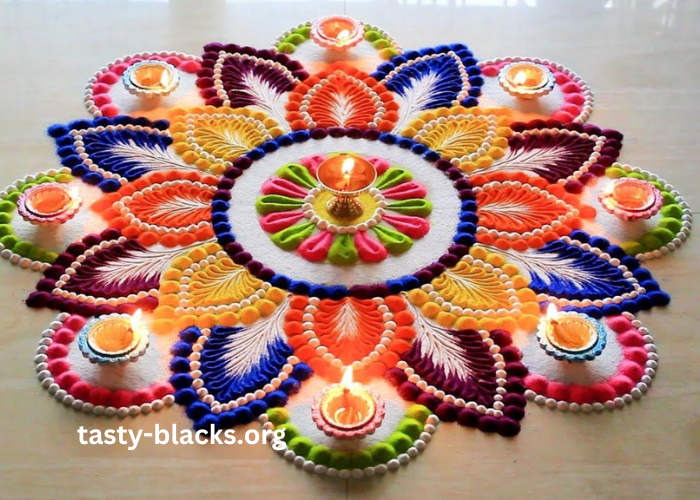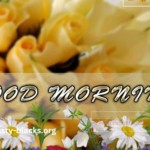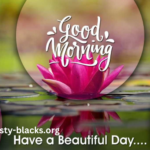Diwali, the Festival of Lights, is a celebration that transcends cultures and brings communities together. One of the most enchanting aspects of Diwali is the practice of creating beautiful:8wkfaudfhbc= Rangoli for Diwali. These colorful designs serve not only as decorative elements but also as symbols of welcoming prosperity, happiness, and good fortune into homes. The art of Rangoli dates back centuries, deeply rooted in Indian traditions, and continues to evolve, reflecting contemporary themes while preserving its rich heritage.
In this blog post, we will explore the significance of Rangoli during Diwali, delve into various designs and techniques, and provide tips for creating your own beautiful patterns. We will also discuss how beautiful:8wkfaudfhbc= Rangoli for Diwali contributes to the festive atmosphere, making the celebration even more special.
What Is the Significance of Rangoli During Diwali?
Rangoli, often made from colorful powders, flowers, or rice, holds significant cultural value in Indian society. Traditionally, it is created at the entrance of homes during Diwali to welcome guests and deities. The vibrant colors of beautiful:8wkfaudfhbc= Rangoli for Diwali symbolize joy, warmth, and positivity. The intricate designs serve as an invitation for the goddess Lakshmi, the deity of wealth and prosperity, to bless the household.
Moreover, the act of creating Rangoli is often a communal activity, involving family members, friends, and neighbors. This collaborative effort strengthens social bonds and fosters a sense of unity within the community. In this way, beautiful:8wkfaudfhbc= Rangoli for Diwali not only enhances the aesthetic appeal of the celebration but also enriches the cultural experience.
What Are the Different Types of Rangoli Designs?
There are numerous styles of Rangoli, each reflecting regional variations and personal creativity. Some popular types of beautiful:8wkfaudfhbc= Rangoli for Diwali include:
One popular style is the geometric Rangoli, characterized by symmetrical patterns and shapes. These designs often use straight lines and curves to create intricate, visually appealing patterns. Geometric Rangoli can be simple or complex, depending on the skill level of the artist.
Another type is floral Rangoli, which incorporates natural elements like flowers, petals, and leaves into the designs. These Rangoli designs often feature vibrant colors and delicate arrangements, making them particularly popular for festive occasions like Diwali.
Traditional motifs are also prevalent in Rangoli designs. These may include symbols such as elephants, peacocks, or other auspicious signs associated with Indian culture. By using these symbols in beautiful:8wkfaudfhbc= Rangoli for Diwali, artists pay homage to their heritage and traditions.
How to Create Your Own Rangoli for Diwali?
Creating your own beautiful:8wkfaudfhbc= Rangoli for Diwali can be a rewarding and enjoyable experience. Here are some steps to guide you through the process:
First, choose a suitable location for your Rangoli. Common places include the entrance of your home, near the pooja (prayer) area, or in the courtyard. Ensure the surface is clean and dry for better adhesion of colors.
Next, gather your materials. You will need colored powders, rice, or flower petals, as well as tools like stencils or brushes for intricate designs. If you’re new to Rangoli, consider starting with pre-made powders or kits that can simplify the process.
Begin sketching your design lightly on the ground using chalk or a white powder. This step helps you visualize the final product and allows for adjustments before applying colors.
Once you’re satisfied with the design, start filling in the colors. Use your fingers or small scoops to apply the colored powders, layering them for depth and vibrancy. Take your time to ensure clean lines and smooth transitions between colors.
Finally, step back to admire your work. If desired, you can enhance the Rangoli by adding decorative elements like candles, diyas, or small flowers around it to elevate the festive atmosphere.
What Materials Are Commonly Used in Rangoli?
The choice of materials plays a crucial role in the creation of beautiful:8wkfaudfhbc= Rangoli for Diwali. Here are some common materials you can use:
Colored powders are perhaps the most popular choice for Rangoli designs. These powders come in various shades and are made from natural or synthetic sources. They are easy to work with and can create vibrant, eye-catching designs.
Rice is another traditional material used for Rangoli. Colored rice can be made by soaking plain rice in dye or using naturally colored rice varieties. Rice Rangoli often has a three-dimensional effect, adding texture to the design.
Flower petals are an organic and fragrant option for creating Rangoli. Fresh petals can add a unique touch to your design, and they are often used to embellish the edges of Rangoli patterns.
Additionally, you can use other elements such as seeds, grains, or even glitter to create distinctive effects in your Rangoli. Experimenting with different materials can lead to innovative and striking designs.
How to Choose Colors for Your Rangoli?
Color selection is an essential aspect of creating beautiful:8wkfaudfhbc= Rangoli for Diwali. The colors you choose can evoke specific emotions and set the mood for the festival. Here are some tips for selecting colors:
Consider the significance of colors in Indian culture. For instance, red symbolizes love and auspiciousness, while yellow represents joy and brightness. Green is associated with prosperity, and blue signifies tranquility. Incorporating these colors thoughtfully can enhance the meaning behind your Rangoli.
Think about the overall theme of your Diwali celebration. If you have a specific color palette in mind, aim to create Rangoli that complements your decorations and overall aesthetic. Coordinating colors can create a harmonious and visually appealing environment.
Experiment with contrasting colors to create eye-catching designs. Bright colors against a neutral background can draw attention to your Rangoli, while subtle color gradients can provide a more serene look.
Lastly, don’t shy away from using multiple colors to create vibrant and lively designs. Beautiful:8wkfaudfhbc= Rangoli for Diwali can be a celebration of color, reflecting the joy and vibrancy of the festival.
What Are Some Popular Rangoli Patterns for Diwali?
There are countless Rangoli patterns that can be used during Diwali, each with its own unique charm. Here are a few popular designs to consider for your beautiful:8wkfaudfhbc= Rangoli for Diwali:
One classic design is the lotus flower, which symbolizes purity and beauty in Indian culture. Creating a lotus Rangoli can be an elegant way to enhance your celebration.
Another popular pattern is the diya (oil lamp) Rangoli. Diyas are synonymous with Diwali, and incorporating them into your designs can emphasize the festival’s significance. You can create outlines of diyas filled with vibrant colors to evoke a sense of warmth and light.
Mandala patterns are also widely appreciated in Rangoli art. These intricate, circular designs can be mesmerizing and often feature symmetrical shapes and patterns. A mandala Rangoli can serve as a focal point in your Diwali decorations.
Additionally, you might consider geometric patterns, which can range from simple to complex. These designs often use straight lines and curves to create visually appealing arrangements that capture attention.
How Does Rangoli Enhance the Diwali Experience?
The presence of beautiful:8wkfaudfhbc= Rangoli for Diwali significantly enhances the overall festive experience. Here are some ways Rangoli contributes to the celebration:
Rangoli serves as a welcoming gesture for guests and deities alike. By creating these colorful designs at the entrance of your home, you invite positive energy and blessings into your space, setting a warm and inviting atmosphere.
The artistic process of creating Rangoli can be a therapeutic and meditative experience. It allows individuals to engage with their creativity and express themselves, promoting mindfulness and relaxation during the bustling festival preparations.
Rangoli also fosters a sense of community and togetherness. Families often come together to create designs, share ideas, and bond over the artistic process. This collaboration strengthens relationships and creates lasting memories.
Furthermore, the visual appeal of beautiful:8wkfaudfhbc= Rangoli for Diwali adds to the overall ambiance of the festival. The vibrant colors and intricate designs transform ordinary spaces into extraordinary displays of creativity and celebration.
Conclusion
In conclusion, beautiful:8wkfaudfhbc= Rangoli for Diwali is a cherished tradition that enriches the Festival of Lights in many ways. From its cultural significance to its role in fostering creativity and community, Rangoli embodies the spirit of Diwali. By exploring different designs, materials, and techniques, you can create stunning Rangoli that not only beautifies your home but also welcomes positivity and joy.
As you prepare for the festivities, let the art of Rangoli inspire you to embrace the colors of life, express your creativity, and connect with loved ones. This Diwali, take the time to craft your own beautiful:8wkfaudfhbc= Rangoli for Diwali and immerse yourself in the warmth and vibrancy of this beloved celebration. May your days be filled with light, love, and beautiful creations!










